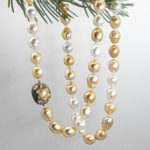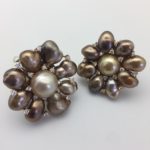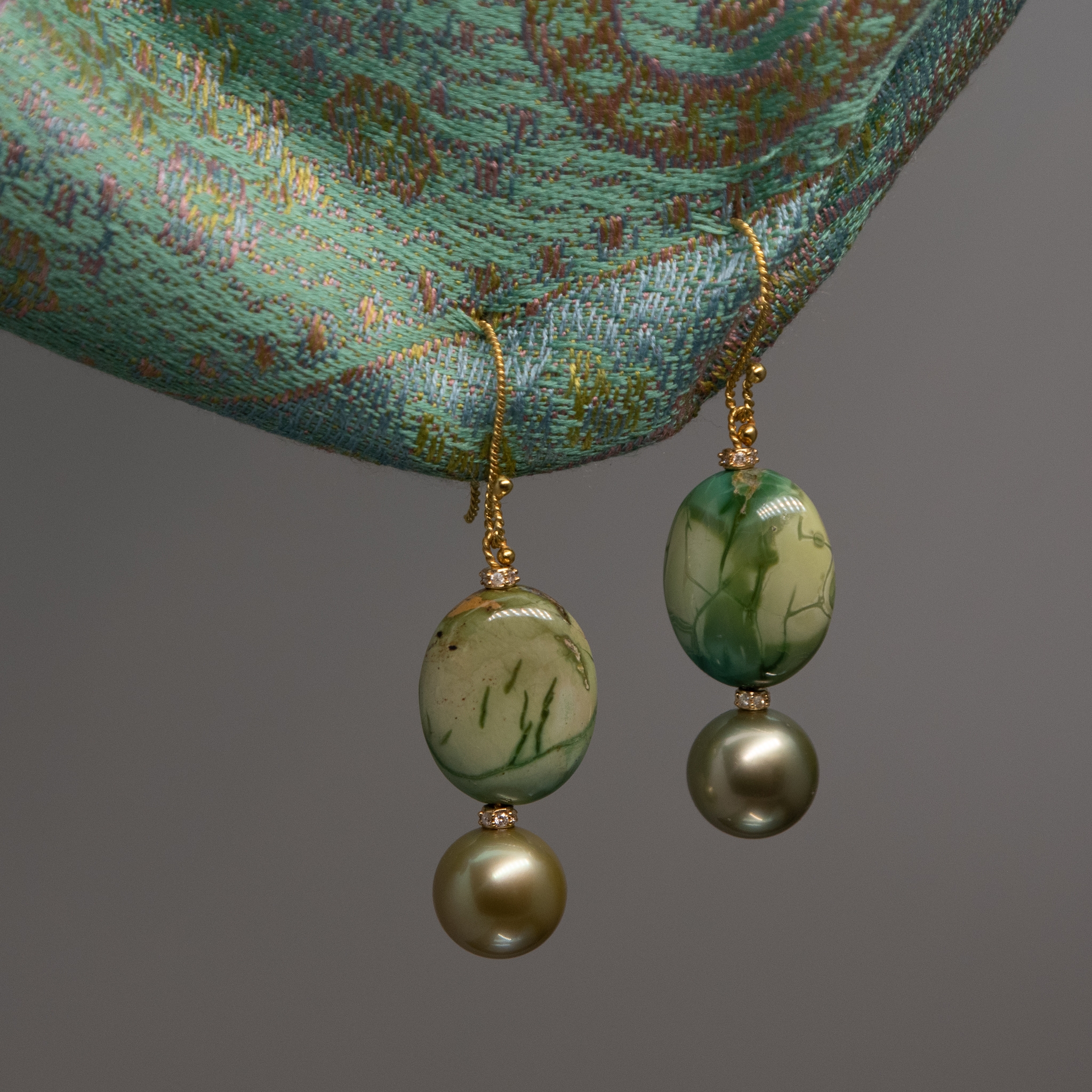Tahitian pearls and Royal Mountain turquoise earrings
Tahitian pearls, each reflecting slightly different hues of pistachio, are complemented by the bright blues and olives of natural Royal Beauty turquoise to create these beautiful earrings. Twisted French wires in solid 18K gold and diamond rondelles provide just the right amount of sparkle!
designer: atelier bento
details:
- pearls: Tahitian salt water pearls
- pearl quality: AAA
- pearl oyster: Pinctada margaritifera
- pearl sizes: 11mm
- primary stone: Royal Beauty turquoise
- turquoise source: Hubei Province, China
- stone treatments: none
- gold content: 18K yellow gold
- earring length: 1.5 inches from drop, 2.25" overall
$1700
item: E 00012
availability: one-of-a-kind
CONTACT: 520-906-7187
about Chinese turquoise:
The Turquoise Museum writes that there is evidence of turquoise use in China dating at least as far back as 1700 BC as evidenced by a bronze plaque with turquoise overlay from the Erlitou culture site in Menan Province displayed at the Academy of Social Sciences in Beijing. Although some turquoise was mined in China in ancient times, more commonly it was acquired in trade with Mongols, Persians, and Turks. Mostly the Chinese used turquoise for carvings and other art. Jade has been the preferred stone for jewelry in Chinese culture. The Tibetians, on the other hand, have preferred turquoise to any other gemstone and virtually every Tibetian possesses some turquoise. Believed to bring good luck, it is worn set in rings and bracelets, as beads in necklaces, and as adornment directly on hats and other clothing. Domestic animals such as horses wear necklaces of felt with turquoise sewn on. Today China has mines that produce a great deal of turquoise. Northwest of Shanghai is the Ma'ashan turquoise mine, and the Hubei Province produces turquoise in colors reminiscent of the now closed mines in Nevada.
An interesting GIA article investigates the current production of gem quality turquoise in the mountains of central China and discusses its complex and varied composition: A relatively new source of gem-quality turquoise is hosted within slates in Zhushan County of China’s Hubei Province. Rough and polished samples were studied using standard gemological methods, as well as FTIR and UV-Vis-NIR spectroscopy. The turquoise formed nodular, massive, and veinlet assemblages. Brown and black veinlets/patches and irregular white blebs were common, and microscopic observation also revealed microcrystalline and spherulitic structures. In general, the nodular specimens were of the highest quality. The deposits show considerable potential as a commercial source of gem-quality turquoise.
about Tahitian Pearls:
Exotic black pearls from the Pinctada margaritifera or Black-lip pearl oyster, are more commonly known as Tahitian pearls. These pearls are often referred to as black, but have a remarkable color range that covers the spectrum - from light, creamy white and grey, to regal greens, iridescent peacock and deep black. Tahitian pearls are relative newcomers to the pearl world, popularized only as early as the mid-1970's by the efforts of Jean Claude Brouillet, Salvador Assael, Robert Wan and others.
Unlike the more common pearl types, Tahitian pearls typically have a naturally dark body color. These pearls have become some of the most sought-after, expensive pearls in the world. Because of their vast color range, matching these pearls into a finished strand is an enormous task requiring thousands of loose pearls to create a single strand.
Tahitian pearls are considered to be the second most valuable commercially farmed pearls in the world. Tahitians come by their dark nacre color naturally. Tahitian pearls are bead-nucleated, but unlike akoya pearls, the nacre is typically very thick. The thinnest nacre allowed by French Polynesian law for export is 0.8 mm, which is a depth that would be considered, in the Akoya world, extremely thick.
Cultured Tahitian Pearls debuted in the early 1970's and have become the iconic "Black Pearl" of the black lipped pearl oyster Pinctada margaritifera cultivated in French Polynesia. These pearls actually exhibit the widest spectrum of colors of any salt water pearl from almost black to peacock green, eggplant pistachio silver, blue and sometimes almost white. Pinctada margaritifera occupies a wide range throughout the Persian Gulf, Red Sea, Sudan, Papua New Guinea, Australia, French Polynesia, Cook Islands, Indonesia, Andaman and Nicobar Islands, Southwestern part of the Indian Ocean, Japan and the Pacific Ocean, and various locations on the coast of India.
YOU MAY ALSO LOVE:

Taru Sake

Flower Island
CONTACT: 520-906-7187




